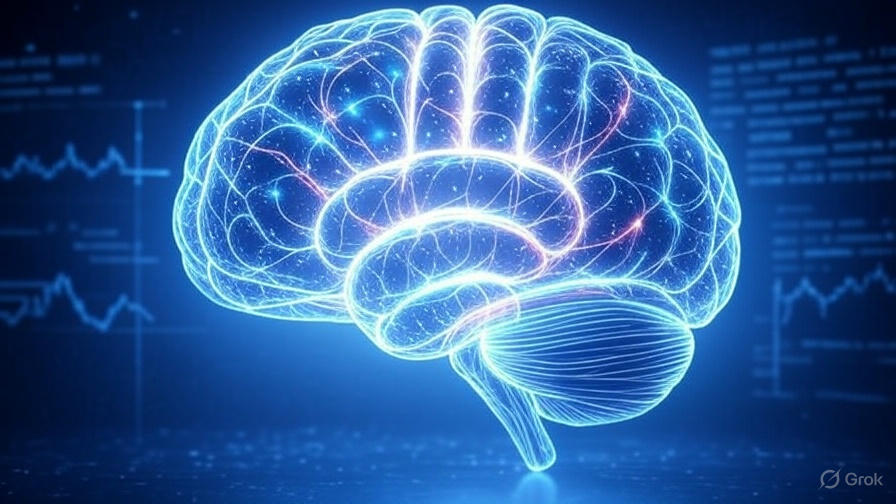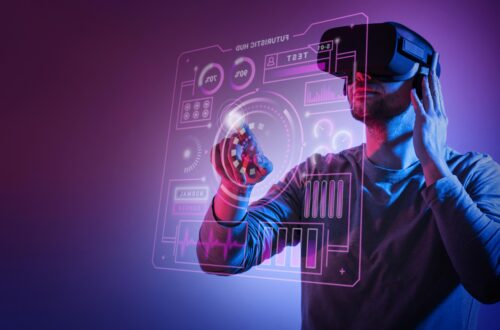From Programmed to Autonomous Intelligence
Artificial Intelligence has entered a profound new era—one where machines no longer rely solely on pre-programmed instructions. Instead, they learn, evolve, and adapt in real time. Welcome to the world of Self-Learning AI Systems, where algorithms grow smarter by observing, interacting, and making autonomous decisions.
This revolutionary approach doesn’t just make machines efficient—it makes them intelligent.
What Are Self-Learning AI Systems?
Self-learning AI systems are advanced forms of artificial intelligence that continuously improve their performance without explicit human supervision. They use techniques like reinforcement learning, unsupervised learning, online learning, and self-supervised learning to adapt based on new data and outcomes.
Rather than being “trained once and deployed,” these systems constantly evolve—making them incredibly valuable in dynamic environments like autonomous driving, financial trading, cybersecurity, healthcare diagnostics, and personalized experiences.
The Core Pillars of Self-Learning AI
1. Autonomy
Self-learning systems operate independently, without requiring human instruction for every task. They can recognize patterns, correct errors, and adapt their behavior to achieve better results.
2. Feedback Loops
Through trial and error, self-learning models collect real-time feedback from their actions. They analyze what works and what doesn’t—refining their strategies on the fly.
3. Scalability
As these systems learn, they unlock the ability to scale knowledge across vast environments—whether it’s a fleet of autonomous robots or millions of personalized user experiences.
4. Resilience
Because they adapt over time, self-learning AI is more robust to unexpected situations. It doesn’t break under new conditions—it evolves to meet them.
Real-World Applications of Self-Learning AI
Autonomous Vehicles
Self-learning algorithms allow self-driving cars to navigate unpredictable traffic, weather, and human behavior. Each mile driven is a lesson learned, shared across fleets.
Healthcare & Precision Medicine
AI models that learn from new medical data can refine diagnoses, predict disease progression, and personalize treatment plans based on the latest global research.
Cybersecurity
In cyber defense, static rules are outdated. Self-learning AI detects novel threats in real time—learning from each attack to build more effective defenses.
Marketing & Personalization
Platforms like Netflix, Amazon, and Spotify use self-learning systems to constantly adapt to user preferences, behavior, and feedback, creating highly personalized experiences.
Why Self-Learning Matters for the Future
We are moving from automation to autonomy. Traditional AI can be powerful, but it’s limited by its training. Self-learning AI, however, doesn’t wait for new training cycles—it evolves.
This dynamic capability is essential in a fast-changing world. Whether it’s handling unseen medical conditions, emerging cybersecurity threats, or navigating new social behaviors, only self-learning AI can truly keep up.
The Ethical & Technical Challenges Ahead
While the promise is massive, self-learning AI also introduces complex challenges:
-
Bias Reinforcement: Without careful oversight, these systems can reinforce existing biases found in data.
-
Explainability: Self-taught AI systems can become black boxes—making decisions that even their creators don’t fully understand.
-
Security Risks: Autonomy means unpredictability. Malicious manipulation or system drift can pose serious risks if not properly governed.
-
Data Dependency: These systems require immense and high-quality data to avoid learning “the wrong things.”
Transparency, auditing tools, and ethical design must evolve alongside AI itself.
Looking Ahead: AI That Teaches Itself to Think
Imagine an AI that writes its own learning curriculum, sets its own goals, and self-evaluates its performance. This is not a distant fantasy—it’s the direction cutting-edge research is heading.
In labs and companies around the world, foundation models, agentic AI systems, and autonomous AI researchers are being built—designed not just to perform tasks, but to teach themselves how to solve problems better than humans ever could.
This is not just artificial intelligence.
This is artificial growth.
Conclusion:
Intelligence That Evolves With Us
Self-learning AI represents a paradigm shift in how machines understand the world. No longer frozen in their training data, these systems are fluid, adaptive, and alive in the digital sense. They promise to transform every industry, every interface, and every interaction.
But this power comes with responsibility. As builders of this new intelligence, we must ensure that what these systems learn leads to a safer, fairer, and smarter future—for all of us.
Visit our Website: VinesNest





